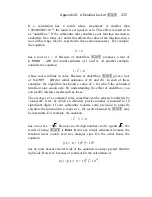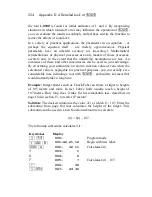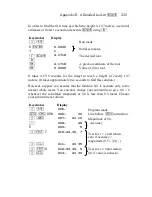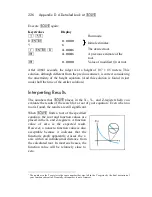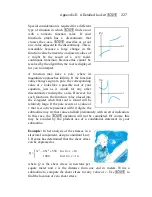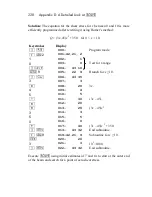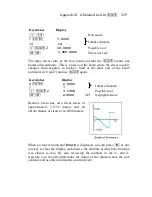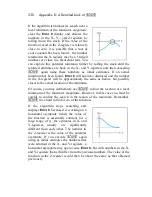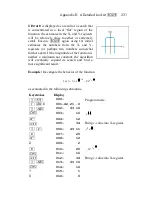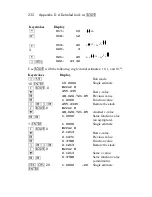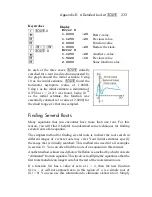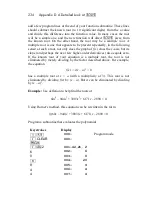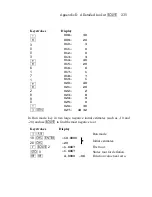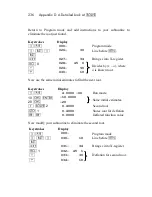
234 Appendix D: A Detailed Look at
_
add a few program lines at the end of your function subroutine. These lines
should subtract the known root (to 10 significant digits) from the
x
-value
and divide this difference into the function value. In many cases the root
will be a simple one, and the new function will direct
_
away from
the known root. On the other hand, the root may be a
multiple root.
A
multiple root is one that appears to be present repeatedly, in the following
sense: at such a root, not only does the graph of
f(x)
cross the
x
-axis, but its
slope (and perhaps the next few higher-order derivatives) also equals zero.
If the known root of your equation is a multiple root, the root is not
eliminated by merely dividing by the factor described above. For example,
the equation
f(x) = x(x – a)
3
=
0
has a multiple root at
x
=
a
(with a multiplicity of 3). This root is not
eliminated by dividing
f(x)
by
(x
–
a
). But it can be eliminated by dividing
by (
x
–
a
)
3
.
Example:
Use deflation to help find the roots of
60
x
4
– 944
x
3
+ 3003
x
2
+ 6171
x
–
2890 = 0.
Using Horner's method, this equation can be rewritten in the form
(((60
x
– 944)
x
+ 3003)
x
+ 6171)
x
– 2890 = 0.
Program a subroutine that evaluates the polynomial.
Keystrokes
Display
|¥
000-
Program mode.
´
CLEAR
M
000-
´b
2
001-42,21, 2
6
002– 6
0
003– 0
*
004– 20
9
005– 9
4
006– 4
4
007– 4
Summary of Contents for HP-15C
Page 1: ...HP 15C Owner s Handbook HP Part Number 00015 90001 Edition 2 4 Sep 2011 ...
Page 17: ...Part l HP 15C Fundamentals ...
Page 64: ......
Page 65: ...Part ll HP 15C Programming ...
Page 118: ...118 ...




